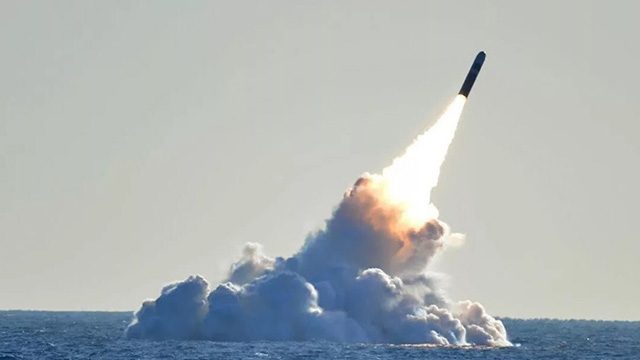On June 30, the U.S. Navy officially awarded Lockheed Martin a contract worth over $1 billion, marking a new phase in the development of the Conventional Prompt Strike [CPS] program. This missile isn’t just another addition to the arsenal—it promises to fundamentally change the way naval operations are conducted.

The CPS is a hypersonic weapon capable of traveling at more than five times the speed of sound and striking targets anywhere on the planet in under an hour—all without nuclear warheads. This makes it unique: fast, precise, and lethal, yet without the risk of nuclear escalation.
What’s particularly impressive is that the CPS will be integrated into some of the U.S. Navy’s most innovative ships—the Zumwalt-class destroyers and Virginia-class submarines.
The Zumwalt, with its futuristic design and stealth capabilities, will be able to carry up to 12 of these missiles, while the Virginia-class submarines, equipped with the specialized Virginia Payload Module, can carry up to 28 CPS missiles, providing immense firepower concealed beneath the waves.
Lockheed Martin describes the CPS as a hypersonic boost-glide missile. This means it combines a powerful rocket booster with a maneuvering glider that can alter its trajectory during flight. As a result, the CPS achieves not only speed but also exceptional flexibility—something traditional ballistic missiles cannot offer.
According to official data, the CPS travels at speeds exceeding Mach 5, placing it among the elite hypersonic weapons. This speed allows it to reach targets within an hour—a key factor in the Prompt Global Strike concept, which emphasizes the ability to deliver lightning-fast strikes anywhere in the world.
While its exact range is classified, experts estimate the CPS can strike targets over 3,000 kilometers away. In 2017, tests demonstrated that a similar missile traveled over 3,700 km from Hawaii to the Marshall Islands, providing a glimpse of the system’s serious potential.
At the heart of the CPS is the C-HGB module, developed by Sandia National Laboratories and Dynetics. This maneuvering glider, based on the SWERVE prototype, enables the missile to evade missile defense systems by avoiding predictable ballistic trajectories and maneuvering during flight.
The missile uses a two-stage solid-fuel engine from Northrop Grumman with thrust vector control, enhancing its precision and maneuverability. Its dimensions are impressive—approximately 88 cm in diameter and about 12 meters in length.
One of the CPS’s distinctive features is its kinetic warhead. Instead of an explosive payload, it relies on the energy generated by its hypersonic impact, allowing it to destroy fortified targets with exceptional accuracy while minimizing collateral damage.
Launching the CPS from ships and submarines presents a technological challenge. The “cold launch” technology uses a gas generator to eject the missile from its launch tube before igniting the engine. Launching from underwater is particularly complex, but recent tests in 2025 at Cape Canaveral demonstrate that the system operates reliably.
Lockheed Martin emphasizes that the CPS is designed to be highly resistant to enemy countermeasures. Its ability to maneuver during flight makes it difficult to intercept, even by the most advanced missile defense systems, such as those possessed by Russia and China.
Equally significant is that the CPS does not use a nuclear warhead, enabling rapid and precise strikes without the risk of global escalation. This is a major advantage over earlier Prompt Global Strike concepts, which included nuclear missiles and raised concerns about unintended wars.
According to Steve Lane, Vice President of Hypersonic Weapons Programs at Lockheed Martin, the CPS represents “a critical step toward integrating hypersonic capabilities into naval warfare.” He highlights that the combination of long-range, short flight time, and high survivability makes it an indispensable tool in modern conflicts.
Northrop Grumman and Dynetics also praise the technology—the two-stage engine and maneuvering glider are engineering achievements that make the CPS adaptable to various combat tasks, including strikes on moving targets.
The U.S. Navy chose to deploy the CPS on Zumwalt destroyers and Virginia submarines for good reason. The Zumwalt-class ships are designed with the future in mind, and with the removal of their older guns, they gain space for new launch modules to accommodate up to 12 missiles.
The Virginia-class submarines, particularly Block V, are equipped with the Virginia Payload Module—an additional compartment with four large launch tubes. This allows each submarine to carry up to 28 CPS missiles, turning these vessels into true floating arsenals.
The combination of the CPS’s stealth capabilities and speed with the unique features of the Zumwalt and Virginia platforms provides the Navy with a powerful and versatile tool capable of delivering both overt and covert strikes.
Integration of the CPS is moving full speed ahead. On the Zumwalt, the first gun has already been removed to install the new launch modules, with tests of the missile from these ships planned for 2025. Full operational capability is expected by 2027.
For the Virginia submarines, the process is slower but ambitious. The first deployment of the CPS on Block V submarines is planned for 2028. Engineers continue to refine the details of underwater missile launches.
As a military observer and expert, I believe the CPS is not just a new weapon but a strategic response to contemporary geopolitical challenges. China and Russia are aggressively developing their own hypersonic weapons, such as the DF-ZF and Zircon, and the CPS gives the U.S. a critical tool to maintain its military edge.
This missile enables the U.S. Navy to deliver rapid and precise strikes in key regions like the South China Sea or the Black Sea without resorting to nuclear arsenals—greatly reducing the risk of catastrophic conflict.
The CPS allows the U.S. to project power with surprising speed and precision, combining the overt strength of the Zumwalt with the covert strike capability of the Virginia. This makes the system versatile and adaptable to a wide range of military scenarios.
Without a doubt, this missile will shift the balance in the hypersonic arms race and demand responses from competitors, accelerating the pace of technological innovation on the global military stage.
***
Follow us everywhere and at any time. BulgarianMilitary.com has responsive design and you can open the page from any computer, mobile devices or web browsers. For more up-to-date news, follow our Google News, YouTube, Reddit, LinkedIn, and Twitter pages. Our standards: Manifesto & ethical principles.

